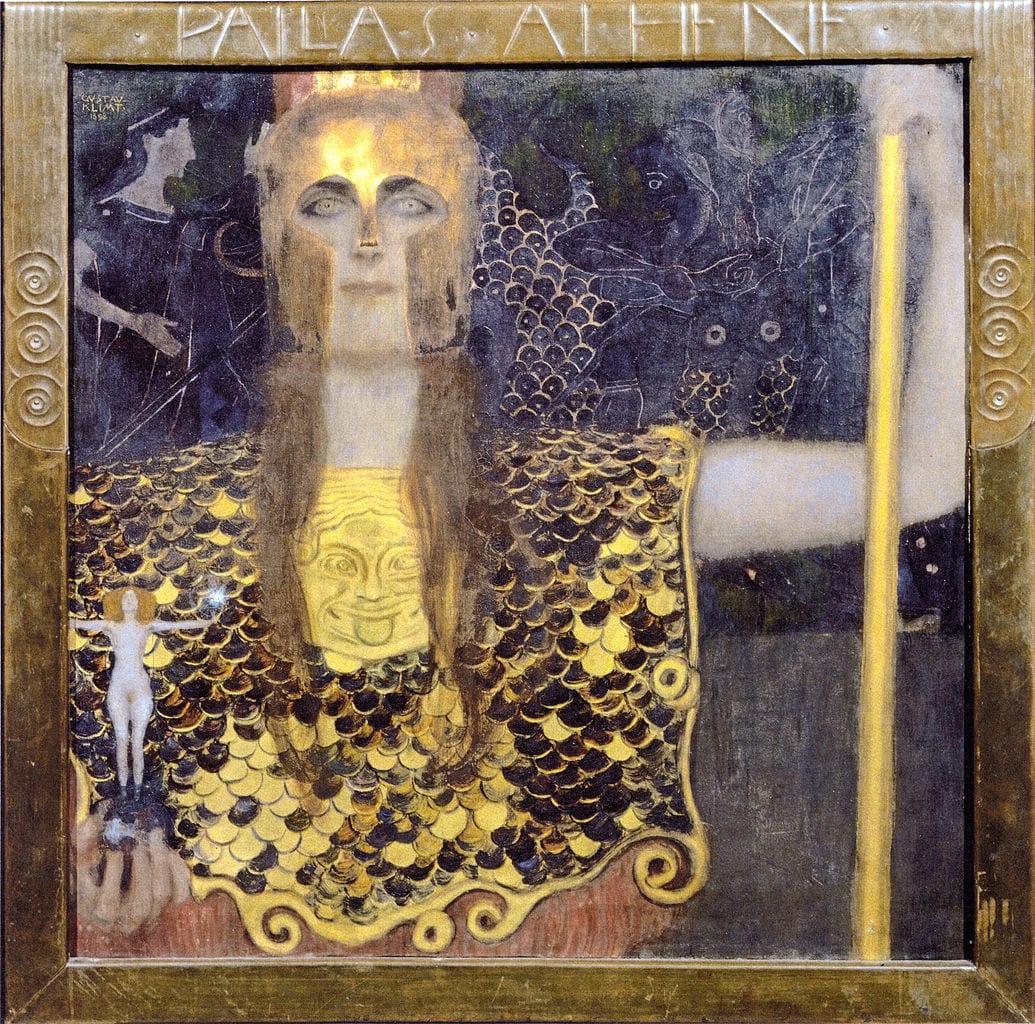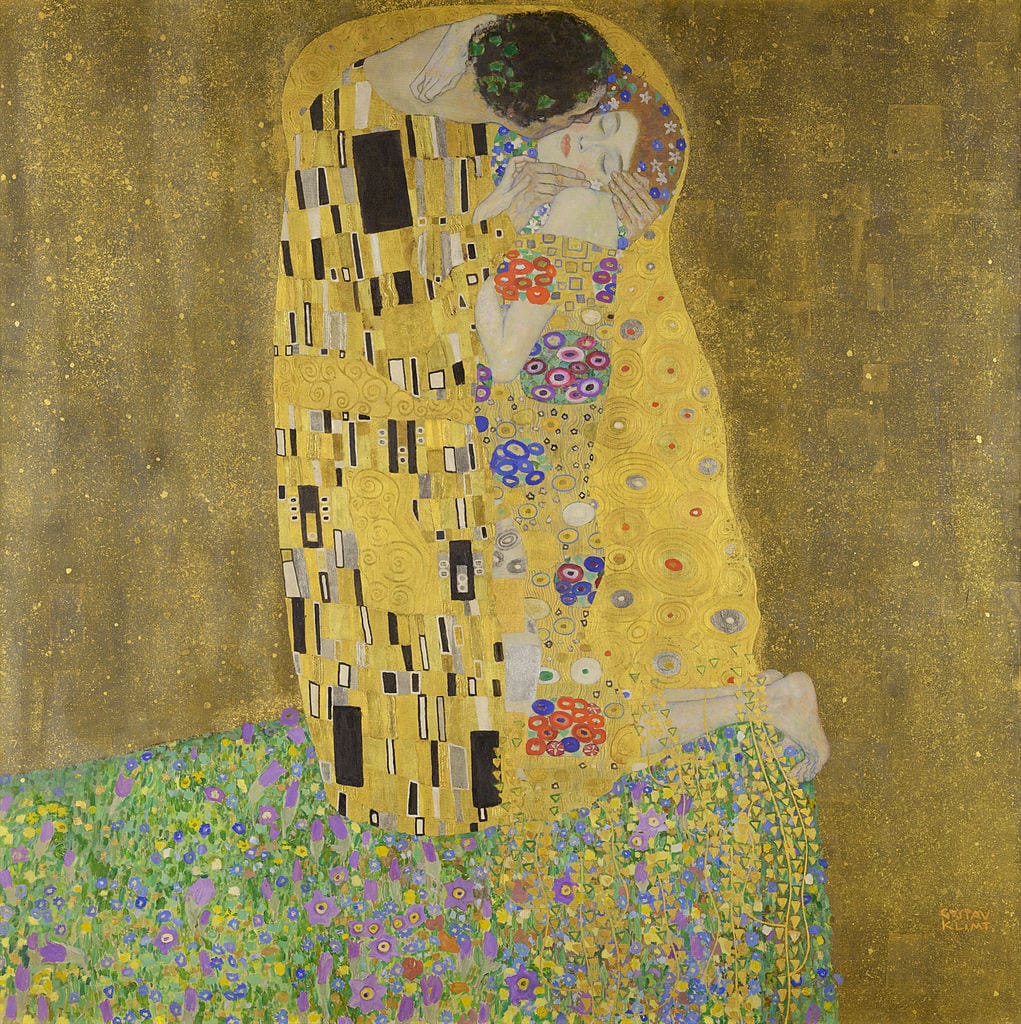Gustav Klimt, the Austrian artist, is one of the most famous of the Symbolists. Throughout his career, he produced many classical paintings, drawings and art objects.
Yet most people know him from his glittering Golden Phase. This was a period in Klimpt’s artistic life that lasted ten years, during which produced his most recognized works and defined his stylistic legacy.
Klimt began to make a name for himself when he, along with his brother and another fellow artist, were often paid to paint murals across Vienna. Though the murals were done in an academic style, glimpses of his future in the Secessionist Movement and his subsequent Golden Phase were already evident.
When Klimt co-founded the Secessionist Movement in 1897, he sought to move away from the conservative art scene of Vienna and to give modern artists space for exhibiting their works. He also used this time to experiment with his own style, drawing inspiration from the Art Nouveau and Arts and Crafts movements. His new modern style came to be called Symbolist, and, in its early years, Klimt incorporated gold leaf into what would become his most famous paintings.
1. Pallas Athene
This oil painting depicting the Greek goddess Athena was one of the first works he completed as he entered his Golden Phase in 1898. Athena is shown clad in armor in the classical style, but the gold leaf indicates the new direction he is taking.

Photo Credit: Wikimedia
2. Judith I
Another of his early pieces focuses on Judith, a figure from the Bible known for seducing and then slaying the invader Holofernes. Klimt also began to introduce erotic elements as part of his signature golden style.

Photo Credit: Wikimedia
3. The Kiss
His most recognizable and famous painting, The Kiss portrays a couple, clad in contrasting robes, in an embrace on a patch of glittering flowers and surrounded by gold.

Photo Credit: Wikipedia
4. Portrait of Adele Bloch-Bauer I
Painted at the height of his Golden Phase, this painting was commissioned by a wealthy Viennese banker as a portrait of his wife. The painting shows Klimt’s heavy use of gold leaf and the Byzantine imagery he favored. This painting, along with some of his others, has a long and tangled tale involving Nazis, if you’re curious to read more about it.

Photo Credit: Wikipedia
5. Beethoven Frieze
In 1902, Klimt painted a 112-foot-long wall cycle for the 14th Vienna Secessionist exhibition, honoring composer Ludwig van Beethoven with a visual representation of the 9th Symphony. Klimt is deep into the Golden Phase by now, as the signature motifs of ornamental opulence and eroticism in this painting show.

Photo Credit: Wikimedia Commons
6. Stoclet Frieze
This was a series of three mosaics especially created between 1905 and 1911 for the dining room of Brussels’ Stoclet House. The central panel is the Tree of Life, which features swirling tree branches and Klimt’s signature motifs, including feminine figures and a kissing couple.

Photo Credit: Wikimedia
7. Death and Life
Klimt diminished his use of gold decorative elements in his paintings around 1911. His works began to take on more of an inlay or tapestry style with planes of colors.

Photo Credit: Wikimedia
Klimt died in 1918, though he was around to see Death and Life win first prize in 1911 at the International Exhibition of Art in Rome. Unlike many artists, Klimt was fortunate to live long enough to see his art celebrated.
It was his Golden Phase, though, that made him an internationally recognized cultural icon.






